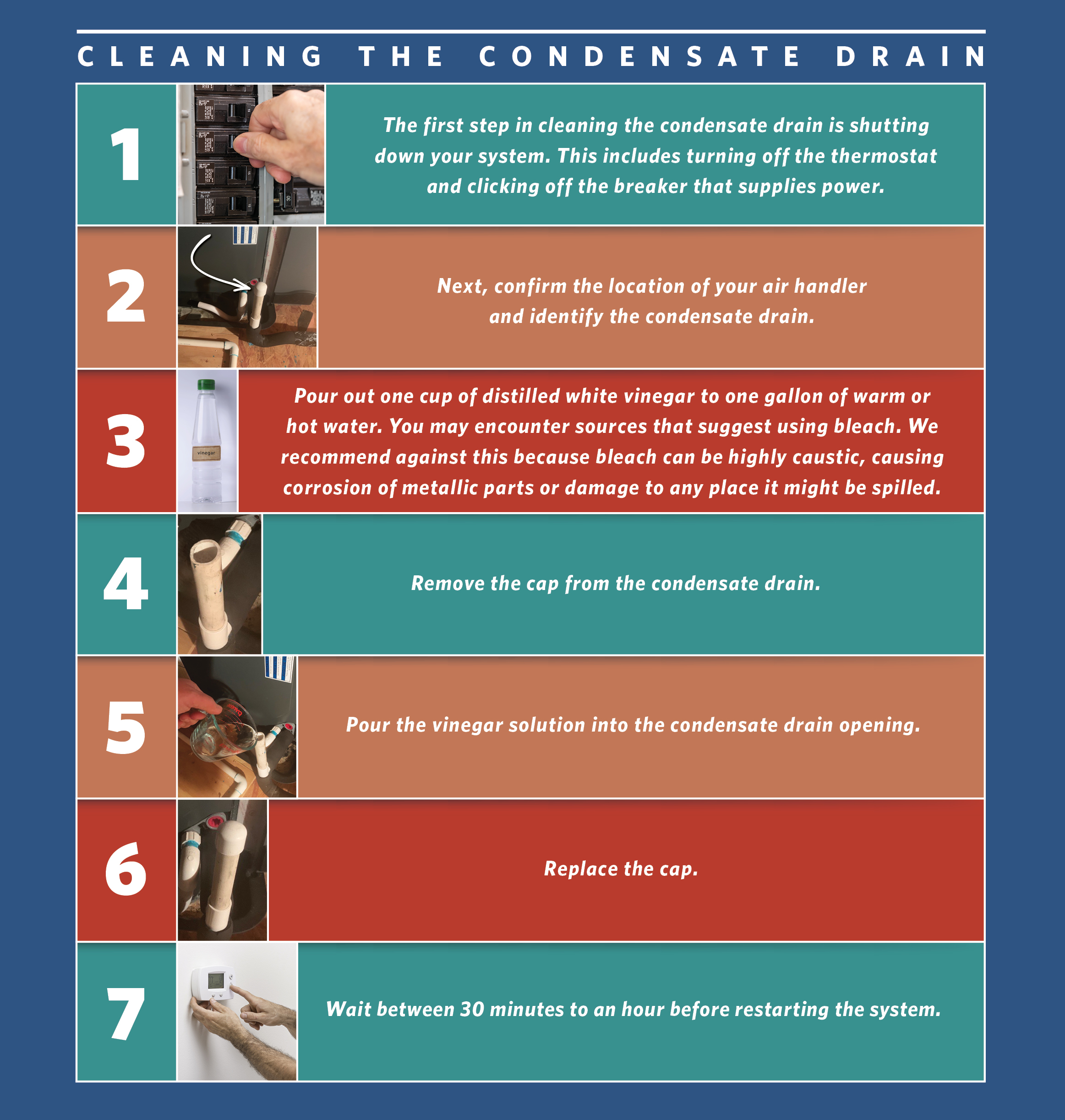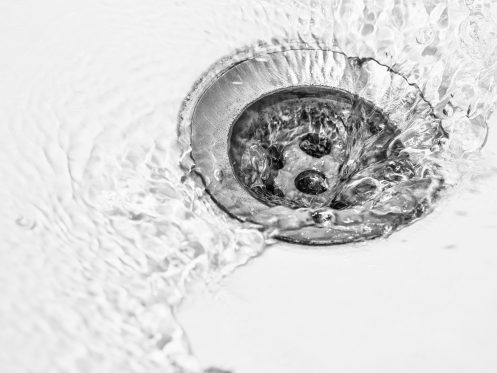Dehumidifying indoor air is a critical part of an AC/heating system’s air conditioning process, and it’s vital to normal operation. Once moisture is taken from the air, it needs a place to go. This is the job of your condensate drain—to carry that excess moisture out of your home—and it’s why regular condensate drain maintenance is critical to the normal function of your AC unit. But do YOU know where to find your condensate drain or know how to keep it clear of potentially damaging blockages?
Quick and Easy Do-It-Yourself Maintenance
It may come as a surprise that you don’t need to be an HVAC professional to perform regular condensate drain maintenance and keep it clear. And you can clean it without expensive equipment, detailed knowledge of the system or marking an entire day off your calendar. For most home AC/heating systems, all you need for DIY condensate drain maintenance is one cup of vinegar to one gallon of warm or hot water and about 30 minutes to an hour’s worth of time.
Locating the Condensate Drain
The condensate drain is a pipe where humidity removed by your system’s evaporator coils literally drains harmlessly away from your home. The drain is located near where you change the system air filter—at the air handler. In many local homes, the air handler is in the attic, but you might also find it in a utility closet or even a garage.
The condensate drain is a white, gray or black ¾-inch PVC pipe that extends from the bottom of the air handler (placement can vary slightly from unit to unit depending on system orientation and design). This pipe may be wrapped in insulation, but its opening will generally jut up in an “L” shape, uninsulated, and capped with a PVC cover.





The Consequences of Inadequate Condensate Drain Maintenance and Clogging
The moisture inside a condensate drainpipe provides optimal conditions for mold, mildew, algae and bacteria to grow. Not changing the air filter frequently enough can worsen the problem, creating a sludgy, slimy mess that impedes or completely blocks moisture flow. With nowhere to go, moisture may leak from the system and overflow. Many systems—especially those in an attic—have a secondary “overflow” drain situated beneath and encircling the air handler. It’s about two inches deep. Moisture in this secondary drain is a sign that the condensate drain may be clogged.
Leakage and overflow from a clogged condensate drain can cause costly damage to the system and home or to anything nearby. In the case of attic-based systems, it can severely damage the home’s ceilings. Even if a blockage doesn’t cause leakage, the muck inside the line can lead to increased humidity in the home, dank smells and even pollutants released with cooled air.
For Professional AC/Heating Maintenance You Can Trust, Call GVEC
We strongly recommend having your system regularly serviced by professional HVAC technicians like those on the job at GVEC. That’s why we offer HVAC Spec Check™ maintenance plan. With HVAC Spec Check, you’ll get a complete professional checkup and service of your system twice-yearly. To learn more about HVAC Spec Check or any other GVEC product or service or for additional advice on DIY condensate drain maintenance, call us at 866.684.2359.
DIY CONDENSATE DRAIN MAINTENANCE




